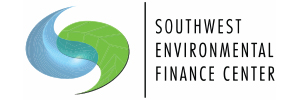Earlier this year, the curriculum director at a local elementary school, asked me if I would be willing to discuss water treatment with the third graders at her school. She said that they were learning about water treatment in their science class and they were excited to meet someone who works with water.
She gave me the following letter, which was written by the third-grade students:

I found their letter adorable so I agreed to come and talk to the class. When I arrived, the students were well behaved and sitting on a rug towards the front of the class. I introduced myself and guided the class discussion around a few questions.
Question 1: What is the difference between storm water and waste water?
Their responses:
- Waste water is dirty water. Storm water is rain water.
- Waste water is from the toilet, storm water is from the sky.
- Waste water comes out of your house, storm water falls off the roof.
They were on the right track. They knew that storm water is caused by rain and wastewater is caused by us.
Questions 2: Why do communities clean their stormwater?
They looked at me with blank stares and were not sure how to respond. So, I asked them to imagine they were a little droplet of water in the sky and imagine where that droplet would go as it fell onto a community.
Our imaginary droplets’ trajectory looked like this:
- First the droplet falls onto a rooftop.
- Then it slides down the roof, down the gutter and onto the drive way.
- Then it rolls down the driveway, onto the street, into the street gutter and into an arroyo.
- The droplet then travels into the Rio Grande.
We concluded that the droplet probably wasn’t very clean when it arrived at the river because it had picked up gunk along the way. The students said the droplet would have dust from the rooftop and trash from the street. I reminded them that our streets are very oily because of all the cars driving on them and so the droplet would have also picked up oil. In the end, we concluded that storm water probably gets very dirty and that is why people try to clean it.
Question 3: Does waste water and storm water have different contaminants?
They talked about this for a long time and we brainstormed what the different contaminants could be. Here is a table of their ideas:
| Wastewater Contaminants | Stormwater Contaminants |
| · Soap
· Poop · Toilet Paper · Pee · Medicine · Food from the Garbage Disposal · Vomit |
· Dead Fish
· Sticks · Oil · Trash · Dog Poop · Dead snakes and lizards · Dead bugs · Bird Poop |
Question 4: How much wastewater do you think Albuquerque cleans each day?
Their Guesses:
- 200 gallons
- 1000 gallons
- 56,000 gallons
It seemed that the biggest amount of water the kids could imagine was 56,000 gallons. When I told them it was a lot more than 56,000 gallons the class ooed and awed. Their eyes grew big and they were very shocked when I informed them that Albuquerque cleans 76 million gallons of water each day. They were happy to find out that most of that water gets recycled and is used to water our parks and golf courses, but were saddened by the fact that Albuquerque does not clean its stormwater. The students did not like to think about all the trash, oil and dead animals they had described earlier flowing into our arroyos and the Rio Grande.
Conclusion:
I finished the lesson by reading them The Magic School Bus at the Waterworks where we got to learn about how water is cleaned and all the pieces that come together to ensure that drinking water is available to us.

Overall, I was very impressed by the students’ vocabulary. They knew about alum was and the purpose it serves. They also knew both the English and Spanish words for aquifer. They were very curious about what one had to do to have the job that I have. Did you go to college? they asked. They thought I was a teenager and were confused as to how I was working as an engineer. Do you have to go to college to do what you do? they asked and I shared with them about my college experience and how I decided to study Environmental Engineering. I think it is wonderful that these students have such a great understanding of how water gets cleaned and why it is important. Living in a desert, water is scarce and instilling a greater understanding of its value in our children at a young age will contribute to greater stewardship in the future.
There are many ways to educate local children about water. For example, you could work on a rain barrel project with your kids! Or you could take them walking along the acequias and talk to them about water rights and irrigation. As water industry workers, one can invite local school children to go on a field trip and tour the water system. Water Operation is an aging industry. We should think about ways to recruit younger generations to the field. As water professionals, one option would be to reach out to local technical high schools and talk to the students the role and responsibilities of a water operator, the value of this profession and the steps the can take to become a water operator.
What experiences have you had with water and children outreach?
What ideas do you have with regards to educating our youth about water?
Please share your ideas in the comments section below.


Recent Comments